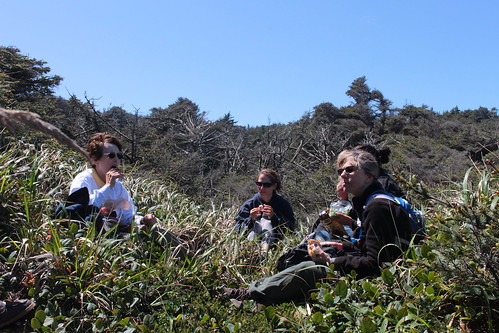Floras Lake was our turnaround spot













New numbers from the Bureau of Land Management show Oregon’s wild horse and burro populations are on the rise.
There are an estimated 4,351 wild horses and burros on Oregon’s rangelands. That’s up more than 13 percent from last year’s population. And it’s far more than the number of horses the BLM says the rangelands can handle in balance with other public land uses.
Wild horses are protected under a 1971 Congressional Act, which makes it illegal for the government to euthanize them to keep populations down. But the horses cause big problems on the rangelands when they chomp down native grasses and cause erosion.
The BLM wants to try new birth control methods for wild horses — including capture and sterilization — but those methods have been protested by animal rights advocates.
The BLM says the appropriate population number is 2,715 for Oregon’s rangelands.




